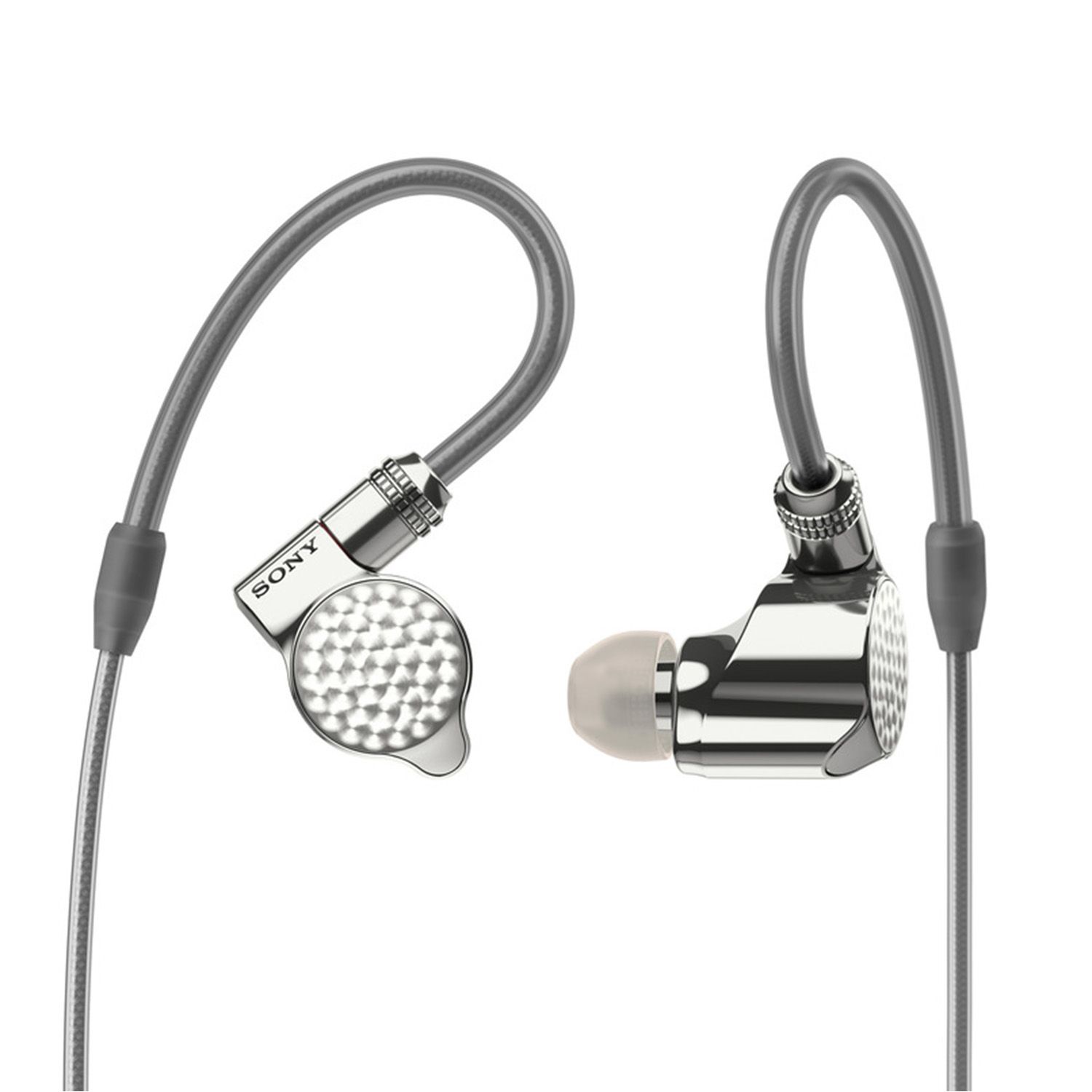Monarch Mk4vs.IER-Z1R
Sound & Specs Comparison
Information
Both IEMs are widely regarded in the audiophile community. See how they differ in terms of sub-bass response, upper mids, clarity, and overall tonality. Spider charts and rating breakdowns included.
Objective Comparison
Facts, details, stuff.
| General Info | Monarch Mk4 | IER-Z1R |
|---|---|---|
| Brand | Thieaudio | Sony |
| Country | China | – |
| IEM Description | The Monarch MKIV is the latest evolution in Thieaudio’s Signature Series, now featuring a tuning switch that lets users toggle between two distinct sound profiles: STANDARD mode offers a studio-neutral tuning with clean mids and refined treble. RUMBLE mode adds +3dB sub-bass for a warmer, more powerful low-end response. It sports a lightweight T6 aluminum shell, an advanced 4-way crossover system with 9 passive components, and the upgraded IMPACT2 isobaric dual-subwoofer setup for tight, impactful bass. Treble is handled with precision thanks to improved EST driver integration for smoother and more extended highs. The MKIV also introduces the new Chocolate modular cable system, offering both 4.4mm balanced and 3.5mm unbalanced terminations with silver-plated OFC wires. A versatile flagship IEM combining technical excellence with customizable tuning. | Despite their small size, the Sony IER-Z1R earphones feature a sophisticated 3-way design with two dynamic drivers and a highly precise balanced armature. The sound quality is not just high-resolution—it's ultra-high-resolution, reaching an impressive frequency response of up to 100 kHz. Housed in a precisely crafted, virtually resonance-free aluminum shell, the design ensures that all three drivers remain in perfect phase alignment. The cables are fully balanced and made from high-purity OFC copper with silver plating for maximum detail retrieval. |
| Price Level | 1.000 – 2.000 | 2.000 + |
| Housing & Driver | ||
|---|---|---|
| Driver Config | Tribrid | Hybrid |
| Driver Types | Dynamic Driver + Balanced Armature + Electrostatic | Dynamic Driver + Balanced Armature |
| Shell Material | Aluminium with 2 faceplates options | – |
| Cable | – | – |
| Technical | ||
|---|---|---|
| Freq Range | 10Hz – 44kHz | 3-100.000 Hz |
| Impedance (Ω) | 10/9 | – |
| Sensitivity (dB) | 100 | 103 |
| Crossover | 4-way crossover with 4 sound tubes+2 ultra-high frequency drivers+4 high frequency drivers+2 mid frequency drivers+2 low frequency drivers | – |
| Platform Info | ||
|---|---|---|
| Comments | 2 | 0 |
| Visit Count | 429 | 93 |
| External Reviews | 1 | 1 |
Meta Ratings
Compared to Monarch Mk4, IER-Z1R creates a clearly wider and deeper soundstage, giving each instrument more space and depth. For comfort fit, Monarch Mk4 performs readably better (8 vs 6.8). While Monarch Mk4 is passable in its design, IER-Z1R stands measurably above, particularly in terms of assembly quality, material choice, and finish. Compared to Monarch Mk4, It’s cable exhibits evidently smoother handling, with fewer instances of memory or stiffness. It's accessories are markedly better curated, reflecting greater attention to usability, presentation, and value-added content compared to Monarch Mk4.
| Monarch Mk4 | IER-Z1R | |
|---|---|---|
| Sound | 8.8 | 9.8 |
| Comfort Fit | 8.0 | 6.8 |
| Build Quality | 7.8 | 9.8 |
| Stock Cable | 7.3 | 8.5 |
| Accessories | 6.8 | 8.3 |
Sound Characteristics
IER-Z1R delivers m deeper and more extended sub-bass, reaching lower frequencies with greater authority than Monarch Mk4 (9 vs 7.5). It renders bass with n greater punch and separation, where Monarch Mk4 sometimes feels bloated (9 vs 8). It adds a more body and slam to bass hits, which makes it feel more physical than Monarch Mk4 (9 vs 8). In the upper mids, It sounds a clearer and more articulate, highlighting vocals and lead instruments better than Monarch Mk4 (8.5 vs 7.5). Instruments like violins and brass are portrayed with a more brilliance on It, while Monarch Mk4 sounds slightly dull (9 vs 7.5). The upper treble of It extends s further, offering more sparkle and openness than Monarch Mk4 (9.5 vs 7.5). It creates a n wider soundstage, giving instruments more space and a better sense of placement than Monarch Mk4 (10 vs 7). The retrieval of faint audio cues on It is m more convincing, while Monarch Mk4 tends to gloss over them (9.5 vs 8). It separates instruments a more distinctly, helping complex passages remain coherent where Monarch Mk4 blends them (9.5 vs 7.5). It shows a better control of masking effects, maintaining clarity across frequency ranges better than Monarch Mk4 (9 vs 8). Notes played through It feel a weightier and fuller, giving a more satisfying impact than those from Monarch Mk4 (9 vs 8.5). Percussion and quick attacks feel a more physical and punchy on It, adding excitement over Monarch Mk4 (9 vs 8.5). It handles sibilant sounds a more gently, with fewer peaks and less sharpness than Monarch Mk4 (9.5 vs 8.5). It renders timbres with a better harmonic balance, preserving the character of instruments more accurately than Monarch Mk4 (9.5 vs 9). Across the frequency range, It stays c more consistent in tonal balance, resulting in a smoother listen than Monarch Mk4 (9 vs 8). It portrays textures in vocals and strings with a more realism, enhancing emotional depth over Monarch Mk4 (9 vs 8).
| Monarch Mk4 | IER-Z1R | |
|---|---|---|
| Sub Bass | 7.5 | 9.0 |
| Bass | 8.0 | 9.0 |
| Bass Feel | 8.0 | 9.0 |
| Lower Mids | 8.5 | 8.5 |
| Upper Mids | 7.5 | 8.5 |
| Lower Treble | 7.5 | 9.0 |
| Upper Treble | 7.5 | 9.5 |
| Sound Stage Width | 7.0 | 10.0 |
| Detail | 8.0 | 9.5 |
| Layering | 7.5 | 9.5 |
| Masking | 8.0 | 9.0 |
| Note Weight | 8.5 | 9.0 |
| Slam | 8.5 | 9.0 |
| Sibilance | 8.5 | 9.5 |
| Timbre Color | 9.0 | 9.5 |
| Tonality | 8.0 | 9.0 |
| Texture | 8.0 | 9.0 |
Tonal Signature
// Nothing to compare yet.

